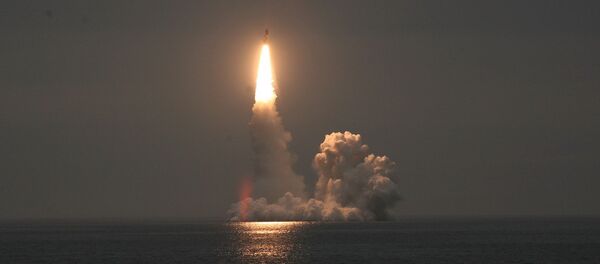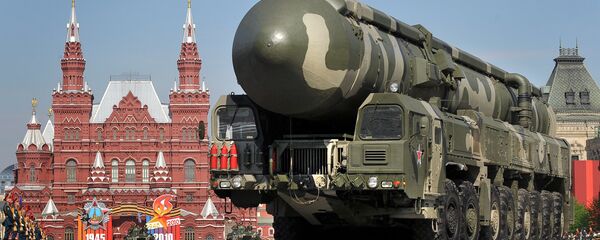Earlier this week, US media reported that Frank Kendall, the US Defense Department's top weapons buyer, had convened a close session of the Defense Acquisition Board for Wednesday, the meeting reviewing the Air Force's strategy to purchase new missiles to replace the silo-based Minuteman III ICBMS, in service since 1970. Spending to modernize the ageing US nuclear triad (including missiles, submarine and air-based nuclear weapons is expected to run US taxpayers a $1 trillion over a 30 year period.
Speaking to Russia's RIA Novosti News Agency, Konstantin Sivkov, military analyst and president of the Moscow-based Academy of Geopolitical Problems, explained that the US will have a long way to go before even hypothetically matching the Russian missile's potential.
The expert recalled that "there has been talk about this missile for about ten years now, but apparently its development is just beginning; we're talking about providing technical specifications to the manufacturers. It will take about ten years before we see the actual hardware; this missile will become a challenger to Russia's Sarmat."
Sivkov suggested that the rough performance characteristics of the new US missile can be predicted. "This will likely be a solid-fuel-based missile with a range of up to 12,000 km, and a throw-weight of between four and five tons. It's probable that it will have a cassette warhead, with each individual warhead expected to have an accuracy of between 50 and 100 meters, and 3-10 warheads per missile."
Little is known about the exact characteristics of the RS-28 Sarmat, a heavy liquid-propelled ICBM being developed for Russia's Strategic Missile Troops and set to be introduced into service in the next couple years. Some sources have indicated that the weapon is a two-stage missile, with an estimated operational range of 10,000 km, a 100 ton mass, and a payload of about 4-10 tons. The missile will be equipped with up to a dozen warheads (or up to 24 Yu-74 hypersonic glide vehicles), each warhead individually steerable during reentry. The weapon is designed with an array of anti-missile measures meant to penetrate US missile defenses.
Political scientists have suggested that Russia began actively considering the modernization its nuclear deterrent after the United States withdrew from the ABM Treaty, and began positioning missile defense systems in Eastern Europe, claiming that these were designed to prevent the threat of rogue Iranian nuclear missiles. Last year, Russian President Vladimir Putin's doubts about the missile defense installations' real purpose were confirmed. After the signing of the Iran nuclear deal, the US has continued with the construction and deployment of its ABM systems in Eastern Europe, including permanent bases in Romania and Poland.





